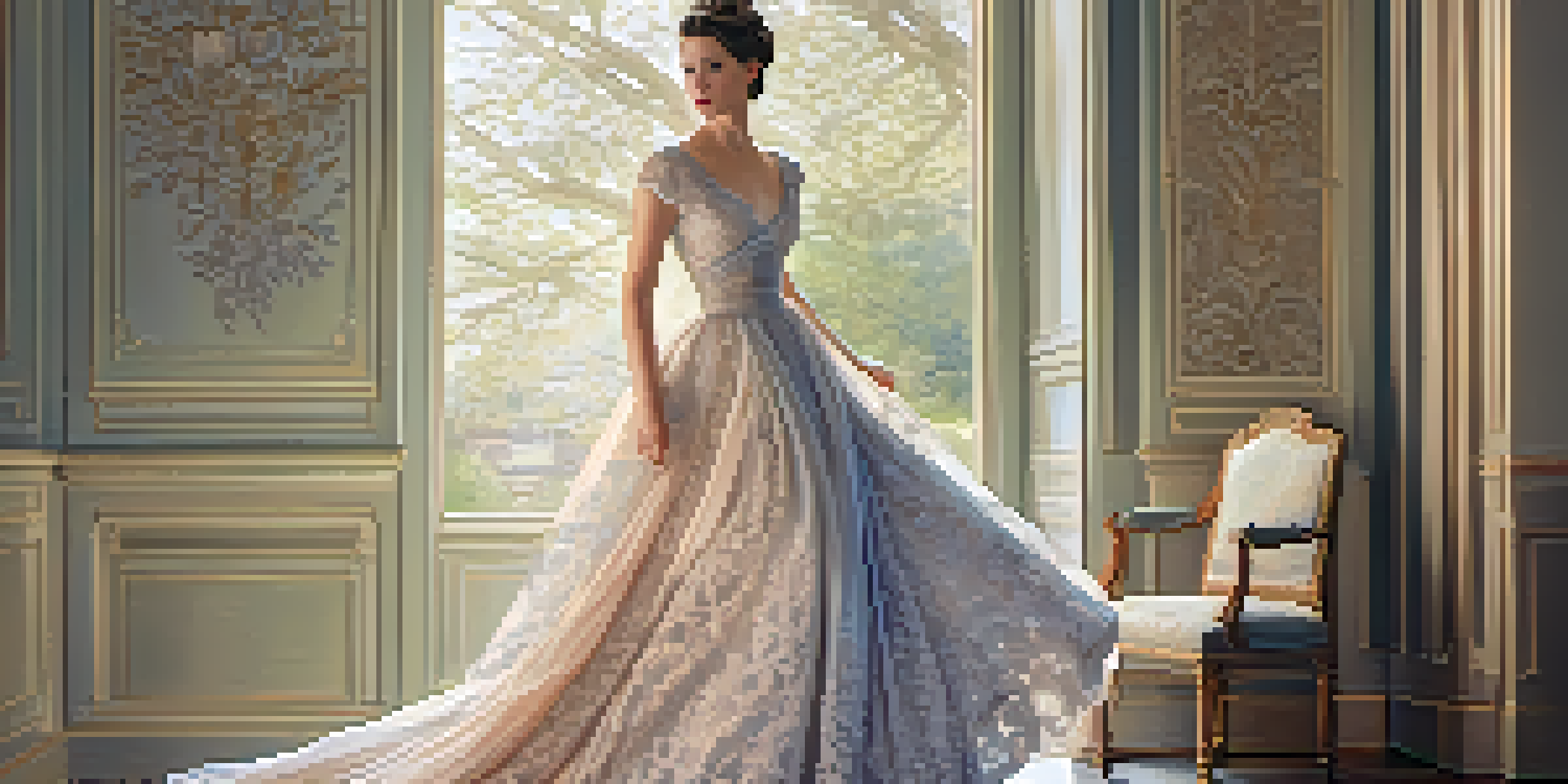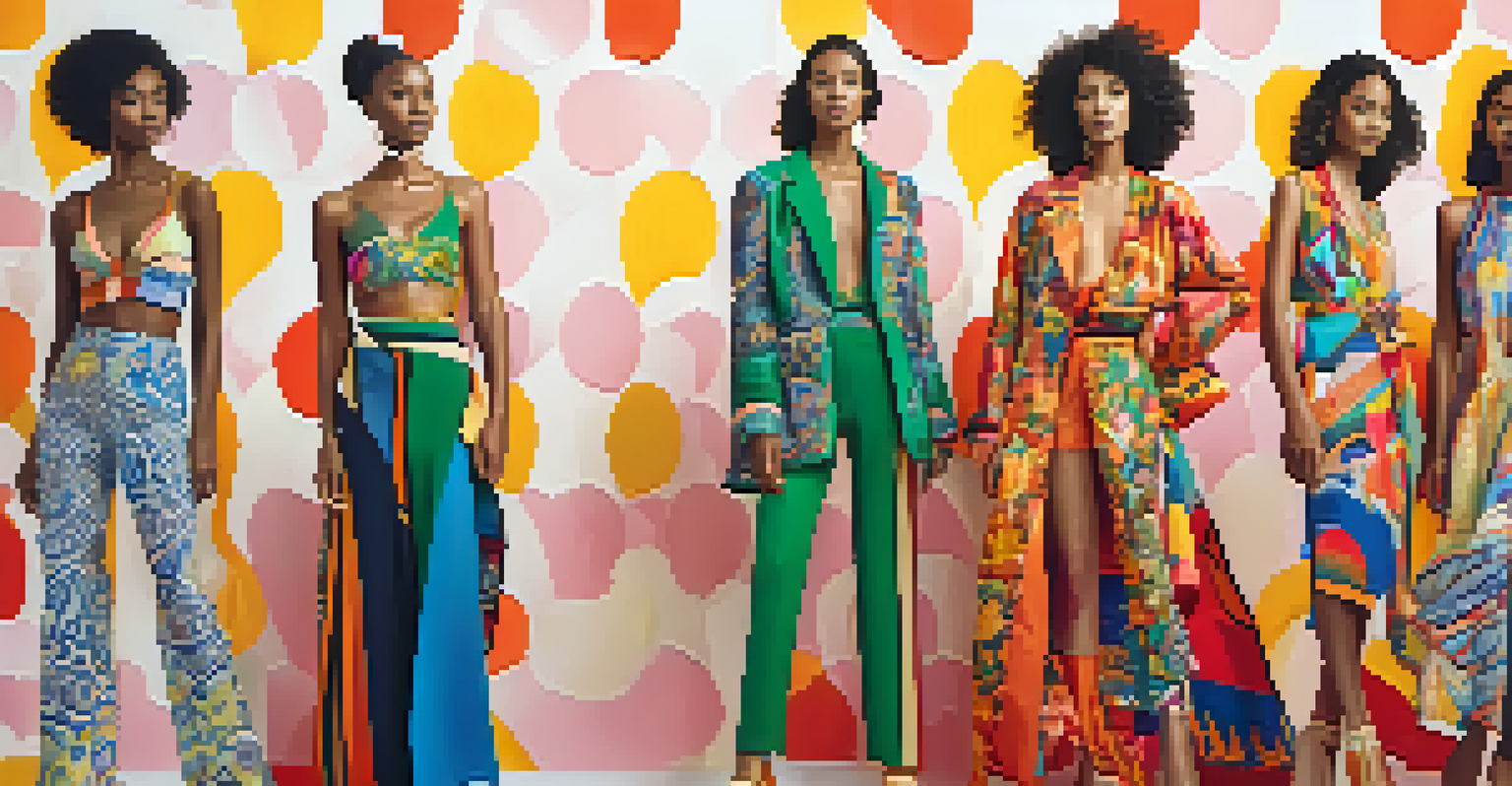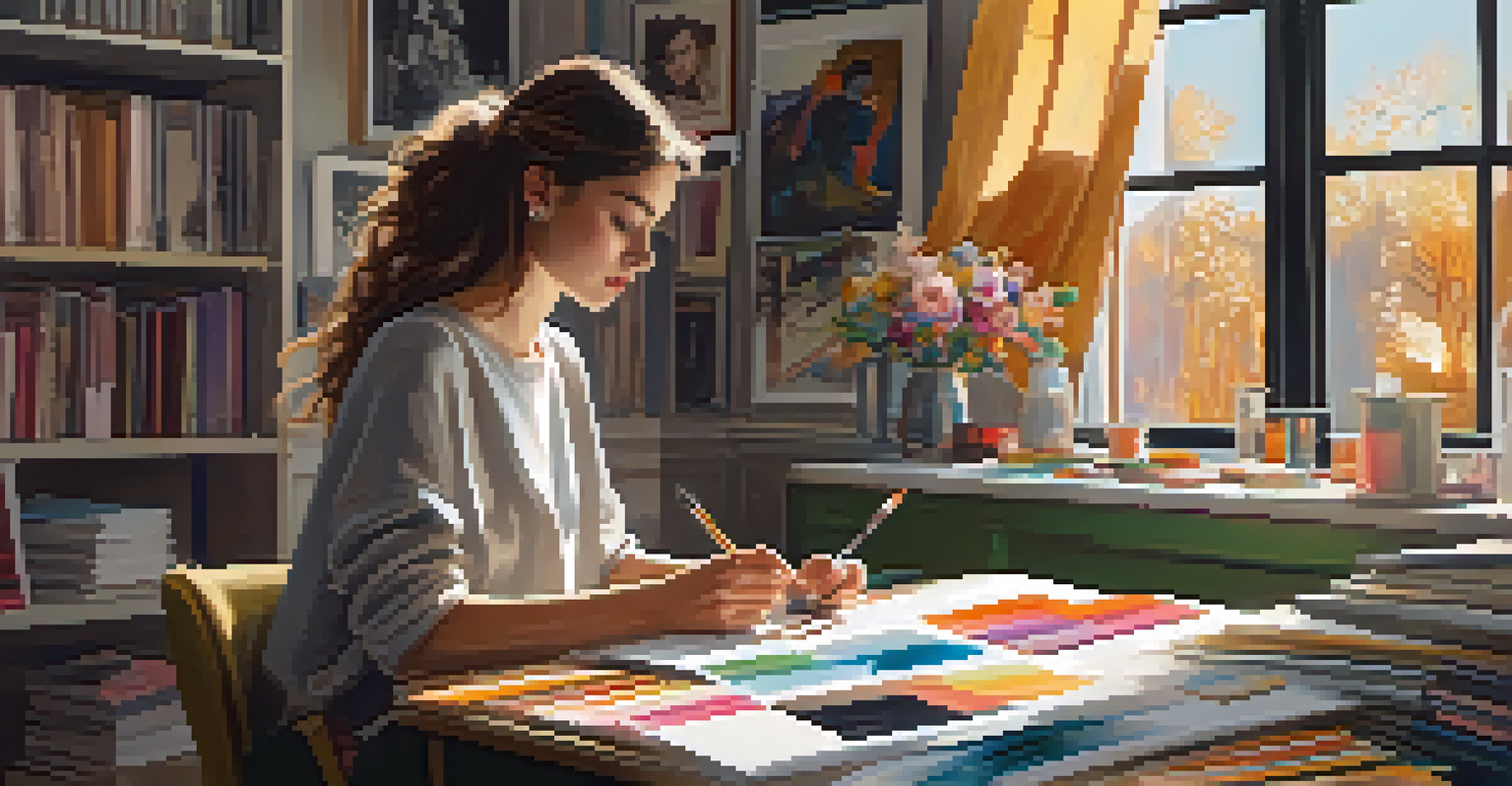Understanding Fashion Illustration: History and Evolution

The Origins of Fashion Illustration: A Historical Perspective
Fashion illustration has deep roots, tracing back to the 15th century when artists began sketching garments for the aristocracy. These illustrations served as a visual guide for tailors, allowing them to create bespoke outfits that met the specific desires of their clients. As society evolved, so did the purpose of fashion illustrations, shifting from practical guides to artful representations of style.
Fashion is the armor to survive the reality of everyday life.
In the 18th century, fashion plates became increasingly popular, particularly in Europe. These illustrated magazines showcased the latest trends, allowing the public to engage with fashion in ways previously reserved for the elite. Artists like Jean-Baptiste-Siméon Chardin and later, Paul Poiret, played crucial roles in bridging art and fashion, influencing what was deemed stylish.
By the 19th century, the rise of the fashion industry brought about a surge in fashion illustration, leading to the establishment of professional illustrators. These artists, often inspired by the intricate designs of couturiers, developed unique styles that captured the essence of their time. This period set the stage for fashion illustration as we know it today, blending artistry with commercial appeal.
The Role of Fashion Illustration in the 20th Century
The 20th century marked a transformative era for fashion illustration, largely influenced by the advent of magazines like Vogue and Harper's Bazaar. Illustrators such as David Downton and Antonio Lopez became household names, using their talents to depict not just clothing but also the attitudes and lifestyles of the day. Their work often went beyond mere representation, capturing the spirit of the times.

As photography gained prominence, some wondered if fashion illustration would fade into obscurity. However, illustrators adapted, combining traditional techniques with contemporary influences to create fresh, dynamic visuals. This adaptability kept fashion illustration alive as a relevant art form, showcasing the creativity behind each collection.
Evolution of Fashion Illustration
Fashion illustration has transformed from practical sketches for the aristocracy to a vibrant art form that blends creativity with commercial appeal.
The 1960s and 70s further propelled fashion illustration into the spotlight, with artists like Yves Saint Laurent commissioning works that celebrated individuality and self-expression. This era not only highlighted the importance of fashion in social movements but also demonstrated how illustrations could convey deeper narratives about identity and culture.
The Impact of Technology on Fashion Illustration
With the rise of digital technology in the late 20th and early 21st centuries, fashion illustration experienced yet another evolution. Digital tools opened up new avenues for artists, allowing for more experimentation with styles, colors, and textures. Today, fashion illustrators can create stunning visuals that blend traditional techniques with digital artistry, leading to a vibrant fusion of old and new.
Good design is all about making other designers feel like idiots because that idea wasn’t theirs.
Social media platforms, particularly Instagram, have become powerful tools for fashion illustrators to showcase their work and connect with a global audience. Artists can share their creative processes and receive instant feedback, which has fostered a sense of community among illustrators and enthusiasts alike. This visibility has also enabled many artists to carve out successful careers without relying solely on traditional publishing.
However, the digital age has also brought challenges, such as oversaturation and the need for illustrators to constantly adapt to changing trends. Despite these hurdles, the essence of fashion illustration—capturing beauty and creativity—remains unchanged, proving that this art form is both resilient and innovative.
The Rise of Contemporary Fashion Illustrators
Today, contemporary fashion illustrators continue to shape the industry in exciting ways. With a diverse range of styles, from minimalist to hyper-realistic, these artists bring fresh perspectives to fashion representation. Many draw inspiration from various cultural backgrounds, enriching the narrative of fashion with their unique voices.
Illustrators like Megan Hess and Liselotte Watkins have gained significant recognition for their ability to blend fine art with fashion, often collaborating with major brands and designers. Their work showcases how fashion illustration can transcend traditional boundaries, becoming a form of storytelling that resonates with audiences on multiple levels. Illustrators are now seen as vital contributors to the fashion ecosystem, influencing trends and consumer behavior.
Social Media's Influence
Platforms like Instagram and TikTok have democratized fashion illustration, allowing artists to reach wider audiences and innovate rapidly.
Moreover, contemporary illustrators often tackle pressing issues such as sustainability and body positivity through their art. By using their platforms to advocate for change, they not only elevate their craft but also help to redefine what fashion means in today's society. This evolving role underscores the importance of fashion illustration as a dynamic and relevant art form.
Fashion Illustration in the Age of Social Media
The impact of social media on fashion illustration cannot be overstated. Platforms like Instagram and TikTok have democratized the art form, allowing illustrators to reach larger audiences than ever before. This shift has transformed how fashion is marketed, with illustrators playing a crucial role in the visual storytelling of brands and trends.
Moreover, the immediacy of social media has encouraged illustrators to create and share work rapidly, often in response to current events or fashion weeks. This fast-paced environment fosters a sense of urgency, pushing artists to innovate and experiment with new techniques. As a result, we see a vibrant mix of styles and approaches that reflect the diversity of the fashion landscape.
However, this landscape also brings challenges, such as the pressure to constantly produce content and the risk of artistic dilution. Despite these pressures, many illustrators use social media as a tool for self-expression and creativity, showcasing their individuality and unique perspectives on fashion. This evolution highlights the adaptability and resilience of fashion illustration in a changing world.
The Relationship Between Fashion Designers and Illustrators
The relationship between fashion designers and illustrators has always been symbiotic, with each relying on the other to convey ideas and visions. Designers often use illustrations as a means of brainstorming and communicating their concepts before they hit the runway. This collaboration can lead to innovative designs that push the boundaries of fashion.
Illustrators, on the other hand, benefit from working closely with designers by gaining insights into the design process and the stories behind collections. This partnership allows them to create more authentic and impactful visuals, capturing the essence of the garments they depict. Many successful illustrators have developed long-term relationships with fashion houses, working together to create iconic imagery.
Collaboration in Fashion Design
The relationship between fashion designers and illustrators is symbiotic, enhancing the creative process and resulting in impactful visuals.
The interplay between designers and illustrators also extends to marketing campaigns, where striking illustrations can elevate a brand's identity. By blending their unique talents, these artists and designers create visuals that resonate with consumers and help shape cultural trends. This collaboration underscores the importance of fashion illustration in the broader context of the fashion industry.
The Future of Fashion Illustration: Trends and Predictions
As we look to the future, the evolution of fashion illustration seems poised to continue in exciting new directions. One notable trend is the increasing focus on sustainability, with many illustrators advocating for eco-friendly practices within the fashion industry. This shift not only reflects consumer demand but also highlights the role of illustration in promoting responsible fashion choices.
Furthermore, advancements in technology, such as augmented reality (AR) and virtual reality (VR), could open up new possibilities for fashion illustration. Imagine engaging with interactive illustrations that allow viewers to explore garments and collections in a whole new way. This technological integration could further enhance the storytelling aspect of fashion illustration, making it even more immersive.

Ultimately, the future of fashion illustration will likely be defined by a blend of tradition and innovation. As artists continue to push the envelope while honoring the roots of the craft, we can expect to see a vibrant and diverse landscape that celebrates the beauty of fashion in all its forms. The journey of fashion illustration is far from over; in fact, it's just beginning.